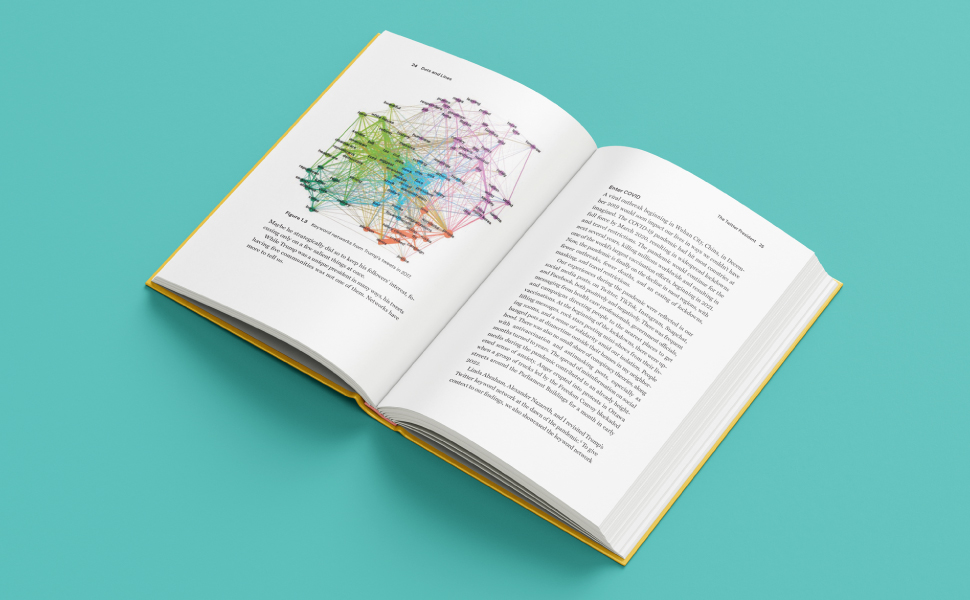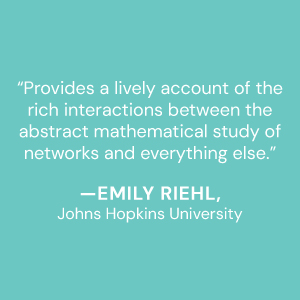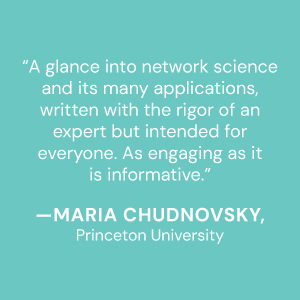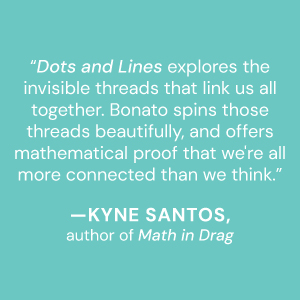
Johns Hopkins UniversityEst. 1876
America’s First Research University
The Ties That Bind: What Networks Reveal About Our World

In this guest post, author and mathematician Anthony Bonato explores the fascinating world of networks—the invisible threads that link people, ideas, and systems across time and space. His book Dots and Lines invites readers to discover how networks help us make sense of the connections that shape our lives and offers a thought-provoking glimpse into the power and beauty of these links.
"As a mathematician, I’ve long pondered a seemingly obvious contradiction in my life on social media. If network science is accurate and a short path of mutual online friends separates us, shouldn’t I be sipping a martini with Oprah Winfrey right now? Or at least, why doesn’t she include my new book on networks, Dots and Lines, in her book club? In practice, the closest I’ve come to Oprah is watching her reruns where she gives away cars.
To delve deeper into the question of how we are connected through short paths, we take a brief detour. Kevin Bacon is a prolific actor who appeared alongside over 2,000 actors in film and television. That makes him a central node in the Hollywood network. An actor’s Bacon number is the number of movies that it takes to connect them to a movie starring Kevin Bacon. Meryl Streep, for example, has a Bacon number of 1, having appeared directly with him in The River Wild. Zendaya’s Bacon number is 2, thanks to Josh Brolin bridging the cinematic gap between them. Even Albert Einstein has a Bacon number of 3, stemming from his cameo appearance in the 1950 film Champagne for Caesar.
In the ivory tower of academic publishing, far from the Hollywood Walk of Fame, a similar number exists. The Erdős number measures the closeness of authors based on the length of collaboration paths. The late and highly prolific mathematician Paul Erdős, the number’s namesake, authored papers with approximately 500 co-authors, creating short collaboration paths that connect most mathematicians today. My Erdős number is a modest two, thanks to my collaboration with Peter Cameron, who co-authored a paper with Erdős himself. That places me tantalizingly close to the legendary mathematician. Albert Einstein and I share a collaboration path of length four, linked through Erdős and his collaborator Ernst Straus.
The relative smallness of the Bacon and Erdős numbers suggests that something universal is at work. Social networks, academic collaboration networks, and even co-star networks have short paths that connect seemingly disparate individuals. Social psychologist Stanley Milgram first studied the phenomenon in the 1960s through his famous chain letter experiment. Mathematicians Duncan Watts and Steven Strogatz formalized this small-world property in 1998, which predicts short chains of links connecting nodes throughout the network.
The small-world property appears in many diverse networks, such as the neural architecture in our brains, links between websites, interactions between characters in the Harry Potter novels, and transactions between bank accounts. It helps explain how we are so vulnerable to the spread of viruses like COVID-19 and how susceptible we are to the latest trending memes or Cambridge Analytica-style scandals.
Being close in network distance doesn’t mean, however, that we walk in the same social circles. Sociologist Peter Blau proposed a concept that captures the invisible geometry of our social connections. According to Blau, we’re more likely to connect with others who share similar sociodemographic attributes. People who have similar cultural backgrounds, income, and religious or political views are more likely to know each other. We refer to this as homophily, meaning that like attracts like. While Oprah and I might be close neighbors in terms of Instagram followers, in what we now call Blau space, we occupy vastly different territories.
The hidden geometry of social space underlying networks explains why friends of friends aren’t necessarily friends themselves. Two individuals might have only one person linking them, but that doesn’t imply closeness in a broader social terrain. While there might be only a handful of people linking me and a random person on social media, those links traverse cultural, economic, and experiential chasms that are wider than the mere count of connections suggests. That explains that while I may be a few links away from another person on social media, it doesn’t mean I’m close to them in any real sense.
Network theory assures me that while Oprah may be close by, our real-world social space distance remains remote. Perhaps someday, these invisible parasocial walls will crumble. Maybe she will even buy me a car. Until then, I’ll appreciate how the mathematical laws of small-world networks make our expansive social universe feel a little more intimate."







